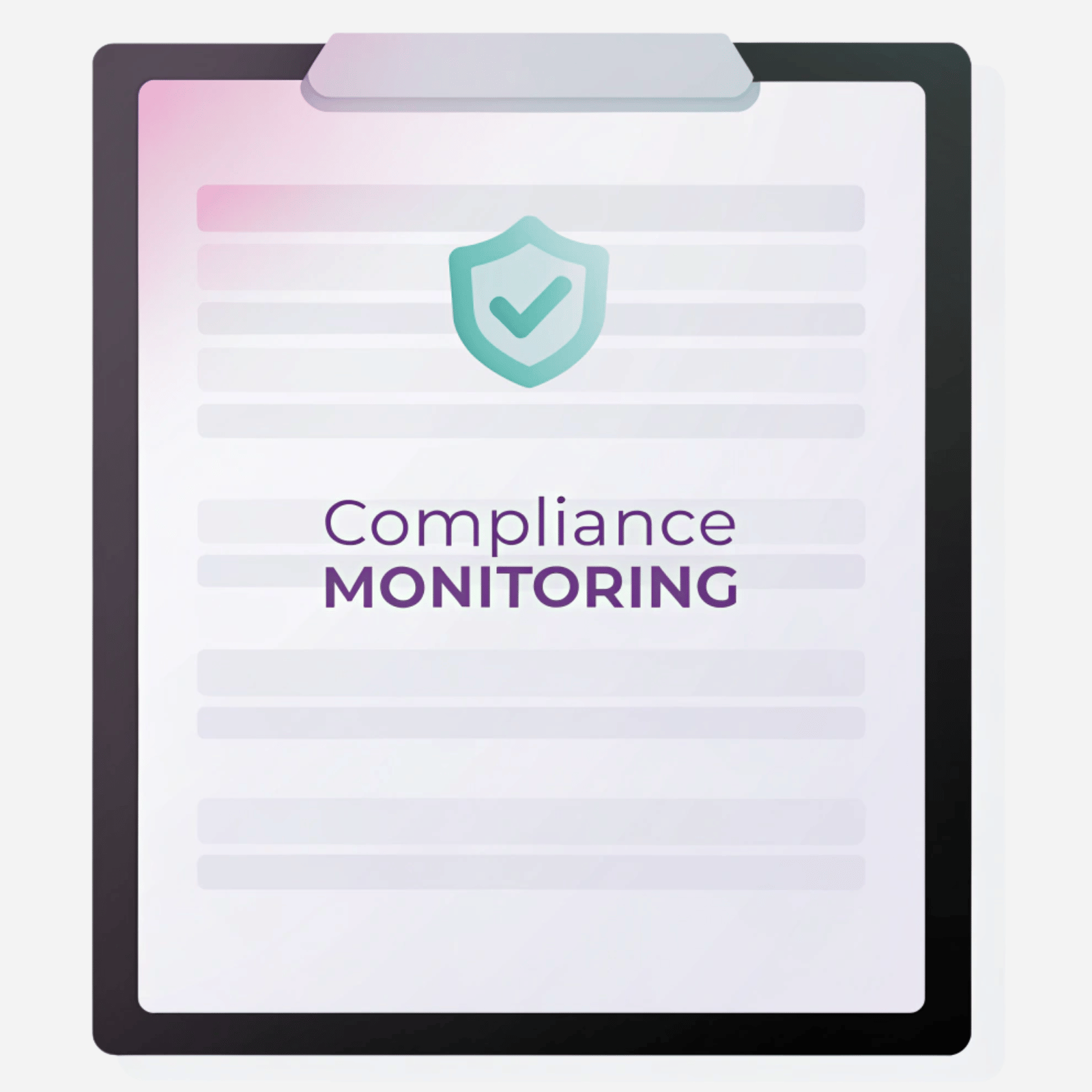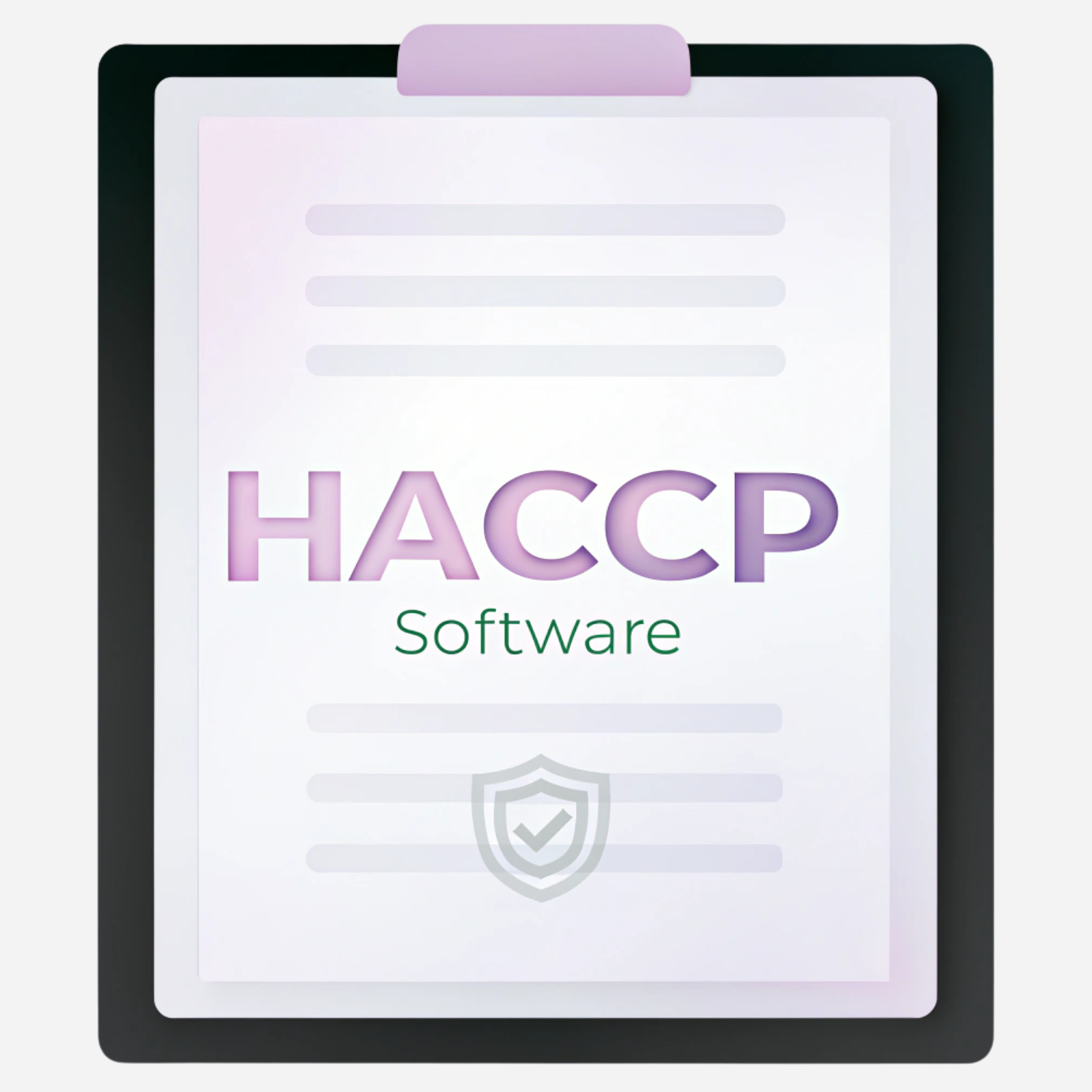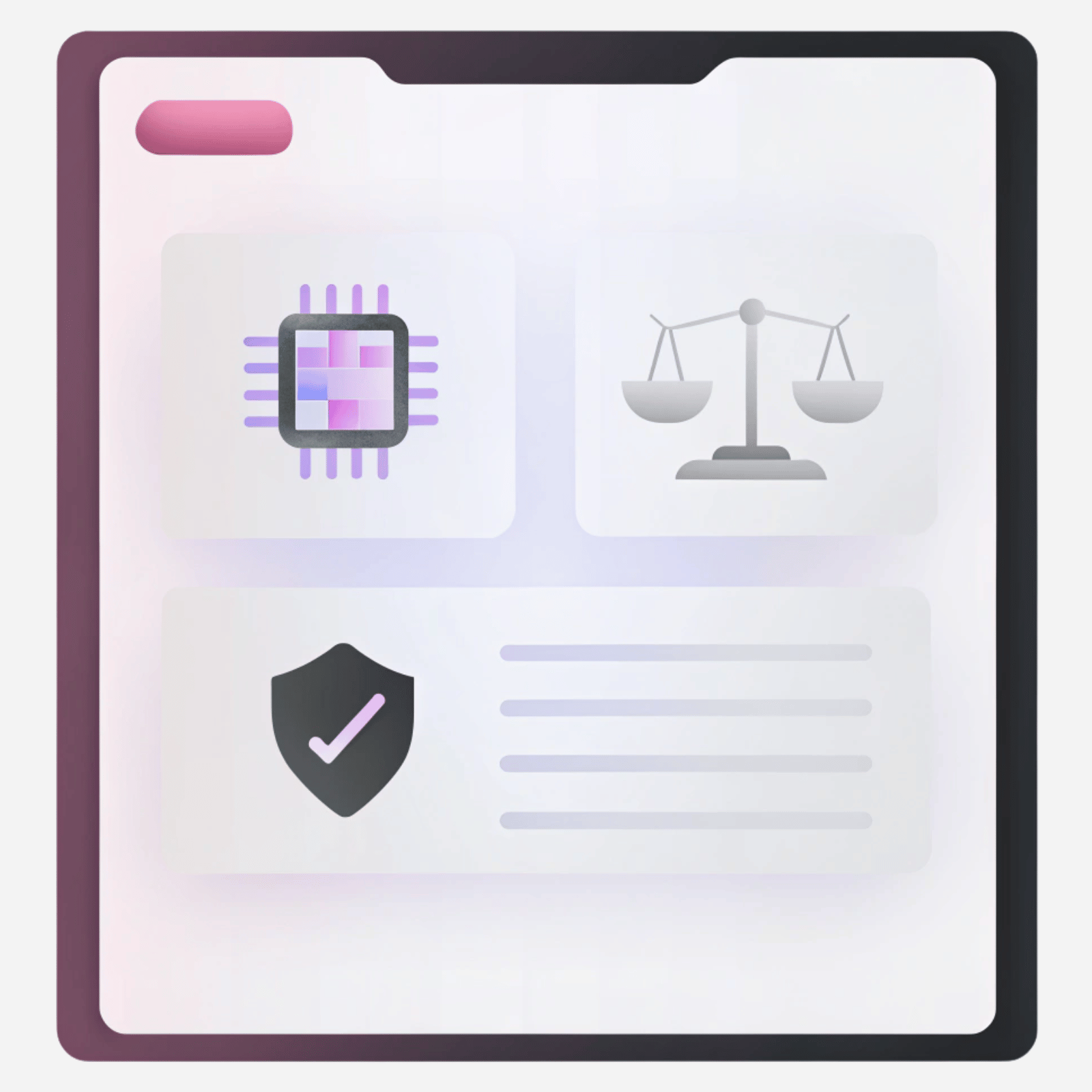
Intro
Imagine a future where compliance management no longer entails sifting through countless pages of regulations, but instead uses an advanced technology to streamline the process. The global legal AI software market, valued at $1.5 billion in 2023, is projected to reach approximately $19.3 billion by 2033, reflecting a robust compound annual growth rate (CAGR) of 29.1% from 2024 to 2033. This growth is accompanied by a significant increase in AI adoption among legal professionals; as of 2024, 47% of legal professionals reported using AI, with projections indicating that over 60% will adopt AI tools by 2026.
The proliferation of AI based compliance tools is expected to automate up to 70% of time-consuming legal tasks, allowing compliance managers, legal teams and lawyers to focus on more strategic aspects of their work. This shift not only boosts the efficiency itself but also reduces the likelihood of human error in compliance processes. As AI continues to evolve, the number of available compliance tools is anticipated to grow, offering a diverse array of solutions tailored to various regulatory needs.
In this article, we will explore the best AI compliance software tools, examining how they are influencing the industry and aiding legal professionals and compliance officers in navigating the complex regulatory environment with greater ease and accuracy.
How AI Tools For Compliance Differ from Non-AI Tools
Traditional compliance tools were built to store regulations, send scheduled alerts, and track changes through manual data entry or keyword searches. While useful, these systems often require heavy human input, can be slow to react to new laws, and may struggle to scale when organizations operate in multiple jurisdictions.
AI tools for compliance, however, combine machine learning, natural language processing, and predictive analytics to monitor regulations in real time, interpret complex legal language, and even anticipate upcoming changes. AI-based platforms record rules and extract obligations, assess relevance to a specific business, and provide proactive recommendations. With AI, compliance teams can handle larger datasets more efficiently, focus on strategic decision-making, and ensure that compliance processes actively support business goals.
Below is a breakdown of the core differences between AI-driven compliance tools and traditional solutions.
1. Real-Time Monitoring vs. Periodic Checks
AI tools deliver continuous, real-time scanning of regulatory sources - legislation, guidance, filings - ensuring you’re immediately alerted to changes.
Traditional tools rely on scheduled updates or manual reviews, leaving gaps in visibility and risking delayed response to new obligations.
2. Automation & Scalability vs. Manual Effort
AI automates repetitive tasks - like data collection, document review, and reporting - freeing compliance teams from manual drudgery. It can effortlessly scale across vast regulatory datasets and growing business geographies.
In contrast, non-AI tools often involve labor-intensive processes (like spreadsheets), which strain to keep pace with complex, evolving regulatory landscapes.
3. Proactive Risk Detection vs. Reactive Review
With machine learning and predictive analytics, AI tools can spot anomalies, forecast legal changes, and flag emerging risks before they escalate - transforming compliance into a forward-looking function.
Traditional systems wait until issues arise, leading to slower, reactive remediation.
4. Enhanced Accuracy & Reduced Errors
AI systems minimize human error through pattern recognition and automated data processing.
Traditional methods, especially manual entry or static rules-based tools, are more prone to inaccuracies and oversight - crucial issues when managing legal obligations.
5. Smarter Insights & Research vs. Static Outputs
AI tools equipped with ML can understand and summarize complex legal texts, answer natural-language queries, and map obligations across jurisdictions.
Non-AI alternatives lack this flexibility, often requiring human interpretation of dense documents.
Tool #1. IONI
IONI is an AI-based compliance platform designed to make regulatory management significantly easier and faster. Beyond traditional compliance automation, it incorporates advanced regulatory intelligence capabilities that keep organizations ahead of changes worldwide.
IONI Features
- Gap Analysis: Using the latest large language models (LLMs), IONI expedites contract and policy reviews by up to 80%, swiftly processing large volumes of documents to identify compliance gaps, missing clauses, misalignments, and incomplete terms.
- Document Drafting: Facilitates the creation and updating of compliance-related documents and policies with customizable templates and AI-sourced suggestions, all backed by citations to ensure accuracy and alignment with current regulations.
- Real-Time Insights & Global Regulatory Monitoring: IONI continuously monitors global regulatory sources - including government databases, standards bodies, and legislative portals- to detect new laws, amendments, and guidance relevant to a specific business. Sources are customized per client, ensuring coverage across all jurisdictions where they operate. AI-powered filtering evaluates each new document’s applicability, reducing noise and ensuring teams only focus on regulations that matter.
- Regulatory Library: All applicable regulations are stored in a centralized, searchable library where IONI automatically extracts and organizes requirements into actionable items. Users can manage applicability, track updates, and maintain a living compliance archive tailored to their organization’s obligations.
- Horizon Scanning: IONI’s early-warning capability identifies draft legislation, policy proposals, and regulatory trends before they become binding. By analyzing developments across multiple jurisdictions, it helps businesses anticipate compliance changes and prepare policies or resources proactively.
- Impact Assessment with AI: Once a regulation is marked as applicable, IONI’s AI agent assesses each requirement’s relevance to the organization’s operations. Applicable items are flagged for action, while non-relevant ones are excluded - streamlining workload, avoiding over-compliance, and ensuring resources are focused where they’re most needed.
- Document AI Research: Enables instant retrieval of regulatory information from extensive databases. By simply asking a question, users receive precise, source-cited answers in seconds, supporting fast legal analysis and informed compliance decisions.
Industries IONI Serves:
- Food & Beverage Manufacturing - IONI supports manufacturers with food production and safety compliance, including HACCP (Hazard Analysis Critical Control Points) standards, traceability, and audit readiness.
- Life Sciences & Pharmaceuticals - Ideal for pharma and biotech companies, IONI delivers real-time regulatory monitoring and insights tailored to the fast-evolving landscape of healthcare, drug safety, and clinical trial regulations.
- Compliance Teams and Consulting/Advisory Firms - These groups benefit from IONI’s automation of monitoring, policy enforcement, gap detection, and decision-support workflows.
Example of IONI’s Toolkit in Action
Scenario: A medical device manufacturer operating in the EU and Asia needs to track evolving post-market surveillance regulations to ensure ongoing compliance.
- Global Regulatory Monitoring: IONI continuously scans official EU and Asian regulatory portals, detecting a new amendment to post-market reporting timelines.
- Horizon Scanning: The platform identifies an upcoming EU Medical Device Regulation (MDR) change in draft stage, allowing the compliance team to prepare updates months in advance.
- Regulatory Library: The applicable amendment is automatically added to the company’s regulatory library, with each new requirement broken down into actionable tasks.
- Impact Assessment with AI: IONI’s AI evaluates which specific clauses affect the company’s product categories, flagging changes to incident reporting deadlines while excluding irrelevant sections.
- Real-Time Insights: Compliance managers receive alerts about when the amendment officially enters into force, ensuring timely implementation.
Outcome: The company updates its internal reporting procedures before the changes become mandatory, avoiding potential penalties and ensuring uninterrupted market access.

Overall, IONI significantly simplifies the compliance officer’s workflow by automating gap analysis, clearly identifying missing regulatory requirements, and providing structured recommendations for policy updates. It enables compliance teams to quickly assess their adherence status, pinpoint affected documents, and receive actionable insights on necessary changes. Instead of manually reviewing extensive regulations, officers can instantly see where compliance gaps exist and apply suggested updates, ensuring a more efficient and accurate process.
Tool #2. Regology
Regology is a purpose-built, AI-powered regulatory intelligence platform that unifies regulatory change management, compliance administration, and legal research into one seamless experience. It helps compliance teams automate manual tasks, anticipate regulatory shifts, and act proactively to manage obligations with ease.
Key Features:
- Smart Law Library™ & Regulatory Change Agent: Regology maintains a dynamic library of global laws, regulations, bills, and agency updates (drawing from over 10,000 data sources across more than 100 countries). This library constantly updates in real-time, feeding into a Regulatory Change Agent that automatically tracks and flags relevant updates - no spreadsheets required.
- Compliance Agent & Mapping: The Compliance Agent centralizes and connects obligations, risks, policies, controls, and tasks. It allows users to map compliance objects directly to relevant legislation, assign responsibilities, and manage workflow - integrating smoothly with existing GRC systems.
- Regulatory Research Agent (Reggi AI): Regology’s generative AI assistant, Reggi, enables natural-language queries across jurisdictions. It delivers contextual insights, summaries, and citations, helping compliance professionals conduct rapid research and cross-jurisdiction comparisons.
Example of Regology in Action:
Scenario: A compliance team needed to extract key obligations, assess risk, and draft related policies - but analyzing dense legal texts manually was slow and resource-intensive.
Solution: With Reggi, Regology’s generative AI assistant, users submit plain-language queries (e.g., “What are the penalties for noncompliance?” or “Draft policy statements for this regulation”) and receive concise, cited insights. Reggi supports multi-jurisdictional research, summarizing laws, extracting requirements, and drafting controls or policies - all within seconds
Benefits:
- Speed: Complex analysis turned into interactive research.
- Clarity: Summaries and policies are clear, actionable, and citation-backed.
- Consistency: Cross-jurisdiction comparison and policy generation in one interface.
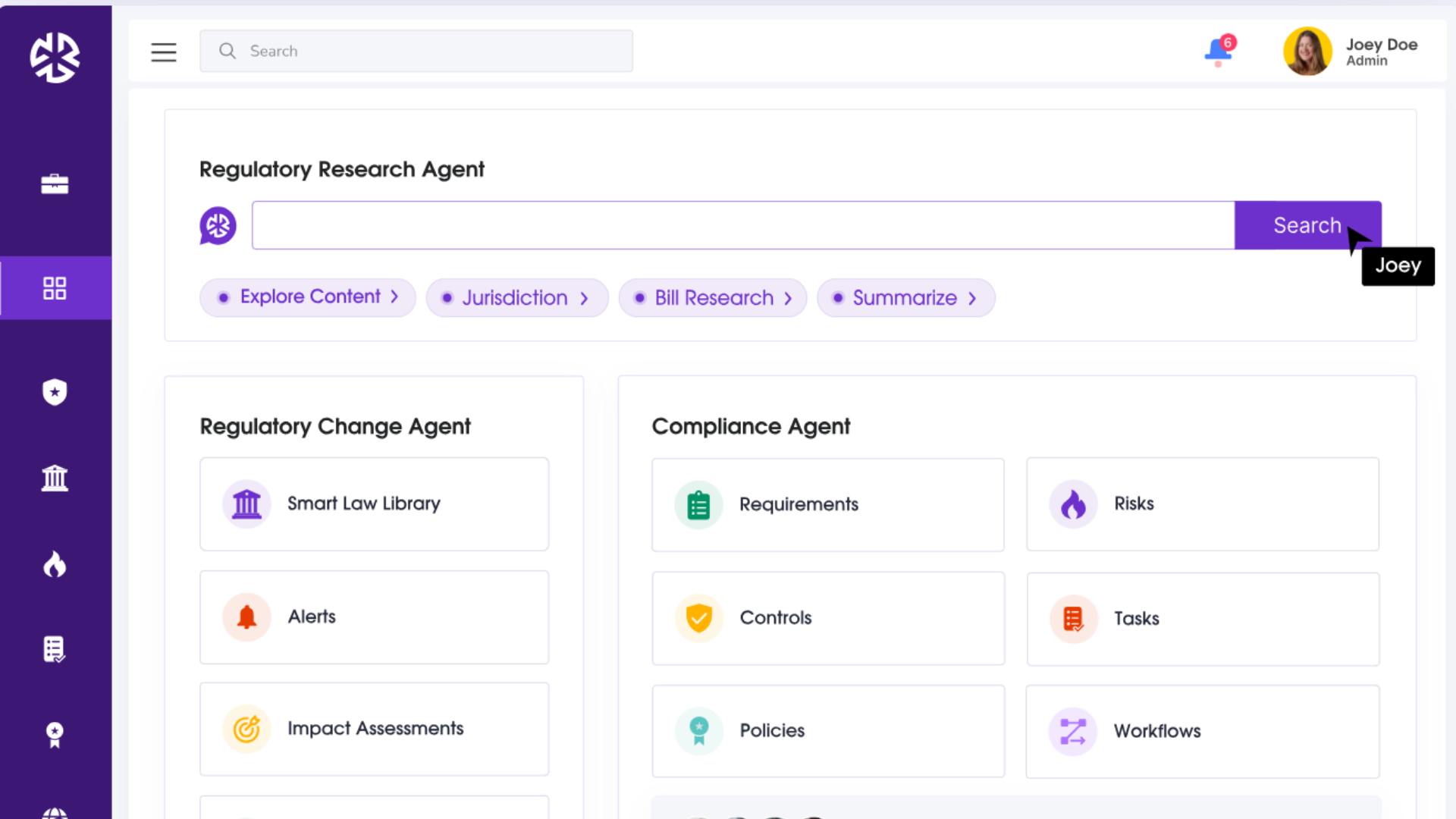
Tool #3. Saphira AI
Saphira AI is an advanced platform designed to simplify and automate hardware safety certification processes. It supports compliance with various standards, including ISO 26262 (up to ASIL-D/SIL-3), ISO 10218, FAA DO-334, and UL/CE Mark.
Key Features:
- Automated Standards Retrieval: Saphira AI employs AI agents to efficiently extract technical details from extensive regulatory documents, reducing the time and effort required to interpret complex standards.
- Test Plan Assembly: The platform automates the creation of test plans by parsing requirements and structuring them into actionable checklists, ensuring comprehensive coverage of safety requirements.
- Report Generation: Saphira AI automatically constructs detailed reports for certifications such as TÜV, UL, CB, ETL, IECEx, and ATEX, facilitating a smoother certification process.
Example of Saphira AI in Action:
Scenario: A robotics company aims to certify its new industrial robot under ISO 10218-1 standards.
- Automated Standards Retrieval: Saphira AI's AI agent swiftly identifies relevant sections of ISO 10218-1, extracting necessary technical details for compliance.
- Test Plan Assembly: Utilizing the parsed requirements, Saphira AI assembles a comprehensive test plan, ensuring all safety aspects are addressed.
- Report Generation: The platform generates detailed certification reports, streamlining the submission process to certification bodies.
Tool #4. Vanta
Vanta is an automated security and compliance platform tailored for startups and small businesses, simplifying the process of achieving and maintaining various compliance certifications. Vanta offers pre-built integrations with popular tools such as AWS, Google Workspace, and over 300 other applications, enabling seamless data flow and comprehensive monitoring across your tech stack.
Key Features:
- Extensive Integrations: Vanta connects with over 300 tools, encompassing cloud services, productivity platforms, and security solutions, ensuring comprehensive coverage of your existing tech stack.
- Automated Compliance Monitoring: The platform continuously monitors your systems, collecting evidence and tracking controls to simplify audits and maintain ongoing compliance with standards such as SOC 2, HIPAA, ISO 27001, PCI, and GDPR.
- Real-Time Security Insights: Vanta provides up-to-date information on your security posture, helping you identify and address potential vulnerabilities promptly.
- People Management: Automate staff compliance processes with security awareness training, background checks, and streamlined onboarding and offboarding workflows.
Example of Vanta's Impact:
Scenario: A rapidly growing SaaS startup aims to achieve SOC 2 compliance to meet client requirements and enhance trust.
- Integration: The startup connects Vanta to its AWS environment, Google Workspace, and other essential tools, enabling seamless data flow and comprehensive monitoring.
- Automated Monitoring: Vanta continuously assesses the startup's systems against SOC 2 criteria, automatically collecting evidence and highlighting areas needing attention.
- Real-Time Insights: The compliance team receives instant alerts about potential security issues, allowing for swift remediation actions.
- Audit Preparation: Vanta organizes all necessary documentation and evidence, streamlining the audit process and reducing preparation time by 50%.

Tool #5. Drata
Drata is a security and compliance automation platform that leverages artificial intelligence to streamline the compliance process for organizations of all sizes. It automates evidence collection, policy generation, and control monitoring, ensuring continuous compliance with standards such as SOC 2, ISO 27001, HIPAA, and GDPR.
Key Features:
- AI-Driven Security Questionnaire Automation: Drata's AI technology automates the review and response creation for security questionnaires, significantly reducing the time and manual effort required. For instance, Jamf reported that using Drata's AI assistance reduced assessment completion time from 2-3 hours to just 15-20 minutes.
- Continuous Compliance Monitoring: The platform continuously monitors and collects evidence of your security controls, ensuring that your organization remains audit-ready at all times.
- Extensive Integrations: Drata offers pre-built integrations with over 180 tools, including AWS and Google Workspace, allowing for seamless data synchronization and compliance management across your existing systems.
- Automated Evidence Collection and Control Testing: Drata automates the collection of compliance evidence and the testing of controls, streamlining the audit process and reducing the workload on your team.
Example of Drata's Impact:
Scenario: A SaaS company aims to achieve ISO 27001 compliance to enhance its information security management system and meet client expectations.
- AI-Powered Questionnaire Automation: The company utilizes Drata's AI to automate responses to incoming security questionnaires, reducing the time spent per assessment from hours to minutes.
- Continuous Monitoring and Evidence Collection: Drata continuously monitors the company's security controls and automatically collects necessary evidence, ensuring readiness for audits and reducing manual tracking efforts.
- Seamless Integrations: By integrating Drata with their existing AWS and Google Workspace environments, the company ensures that compliance data is synchronized across platforms, simplifying management and reporting.
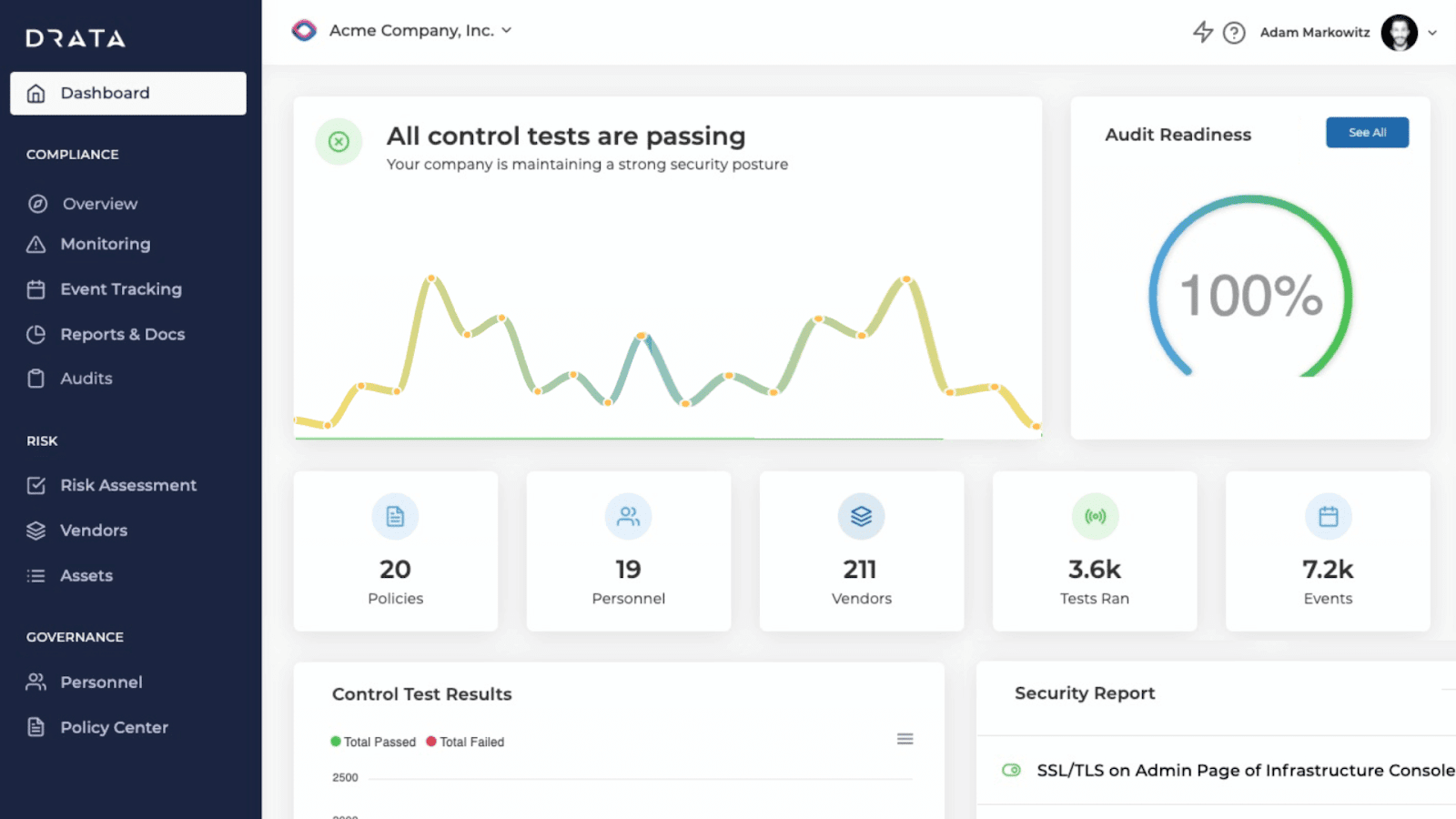
Tool #6. Auditboard
AuditBoard is a cloud-based platform that transforms audit, risk, ESG, and information security management. Trusted by more than 50% of the Fortune 500, AuditBoard offers a suite of products tailored to various industries, including Business Services, Manufacturing, Technology, Financial Services, Healthcare, and more.
Key Products:
- SOXHUB: Simplifies SOX compliance by automating processes and providing real-time insights.
- OpsAudit: Streamlines internal audits with collaborative workflows and centralized documentation.
- CrossComply: Unifies compliance management across multiple frameworks and standards.
- RiskOversight: Centralizes enterprise and operational risk management with comprehensive reporting.
- TPRM (Third-Party Risk Management): Modernizes vendor risk management with automated assessments and continuous monitoring.
- ESG: Operationalizes ESG and sustainability initiatives with data-driven insights.
- ITRM (IT Risk Management): Transforms IT risk management with proactive identification and mitigation strategies.
Example of AuditBoard's Impact:
Scenario: A financial services firm is striving to enhance its compliance management system to meet the stringent regulatory requirements of its industry.
- Unified Compliance Management: The firm utilizes AuditBoard's CrossComply to manage multiple compliance frameworks within a single platform, streamlining processes and reducing the risk of non-compliance.
- Enhanced Audit Efficiency: Using OpsAudit, the firm automates internal audit workflows, ensuring consistency and saving time on recurring audits, which allows the audit team to focus on more strategic tasks.
- Comprehensive Risk Oversight: With RiskOversight, the firm centralizes its enterprise and operational risk management, gaining real-time visibility into risk statuses and enabling proactive mitigation strategies.
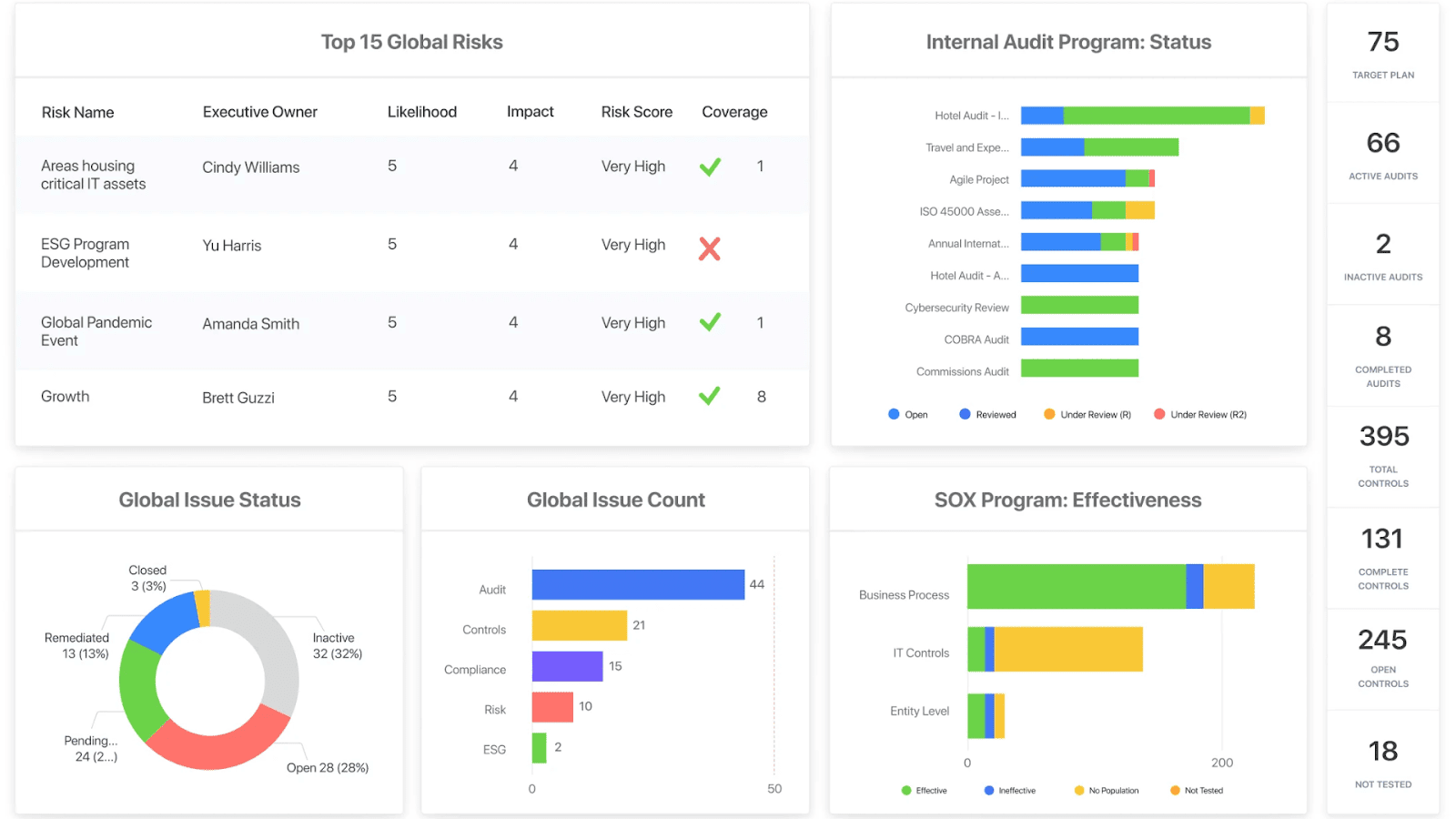
Tool #7. Compliance.ai
Compliance.ai is a leading AI tool for compliance designed to serve as a comprehensive Regulatory Change Management (RCM) platform. Tailored primarily for the banking, financial services, and insurance sectors, it combines real-time regulatory intelligence, impact assessment, and workflow tracking into one unified compliance command center.
Key Features:
- Regulatory Intelligence & Personalized Dashboards: Customized, role-based dashboards deliver real-time insights and actionable information - not just raw data. They monitor proposed and final rules, enforcement actions, and regulatory news, all tailored to your jurisdiction, agency, or topic of interest.
- Automated Filtering & Relevance Triage: Using a patented Expert-in-the-Loop (EITL) machine learning system, Compliance.ai filters out noise - reducing the average annual document review load from ~25,000 to just around 585.
- Regulatory Impact Analysis: The platform extracts obligations, flags updates across versions, and highlights key changes - down to word corrections - in near real-time. It further maps these to your internal policies, procedures, and controls for actionable insights.
- Multi-Language Support: Designed for global compliance teams, Compliance.ai provides auto-translation of regulatory content from 27 languages into English and enables search, annotation, and export in over 98 languages.
- Workflow, Tasks & Audit-Ready Reporting: Once obligations are identified, you can create tasks, assign owners, annotate content, and track progress - all within a collaborative interface. The platform also generates certified audit reports to simplify exams and internal reviews.
Example of Compliance.ai in Action:
Scenario: A global bank must stay on top of changing regulations across multiple jurisdictions, prioritize emerging risks, and demonstrate audit readiness.
- Real-Time Regulatory Intelligence: Personalized dashboards stream live updates on pending and finalized rules, enforcement actions, and deadlines.
- Noise Reduction: AI filters triage thousands of documents into a concise, relevant list - enabling efficient review.
- Obligation Mapping & Impact Analysis: Critical regulatory changes are compared to past versions and mapped to internal policies for actionable clarity.
- Global Language Support: Regulatory texts are auto-translated, annotated, and searchable in multiple languages, enabling cross-border consistency.
- Automated Workflows & Reporting: Tasks are assigned, progress is tracked, and audit-ready compliance evidence is generated - saving hours every reporting cycle.
Tool #8. Hyperproof
Hyperproof is a modern platform for operationalizing compliance, risk, and audit workflows - designed to help teams automate evidence collection, streamline audit prep, and maintain real-time visibility into compliance posture.
Key Features:
- Automated Evidence Collection (Hypersync): Hyperproof integrates with tools you already use - like AWS, Azure, ServiceNow, Workday, and Splunk - to automatically pull relevant data and reduce manual effort in preparing evidence for controls and audits.
- Unified Compliance Operations: It combines compliance management, risk management, and audit workflows into one platform - letting you map controls across frameworks, manage tasks, track issues, and maintain a single “system of record” for compliance data.
- AI-Powered Recommendations & Oversight: Hyperproof applies a hybrid approach where AI generates intelligent control suggestions (e.g. via “Jumpstart”) while ensuring human expertise remains central - enabling smarter but safe compliance decisions.
- Broad Framework & Integration Support: Supports 100+ compliance frameworks (e.g. SOC 2, GDPR, ISO 27001, NIST CSF, DORA, NIS2) and connects with 70+ productivity tools like Slack, Jira, Google Drive, Okta, and more to align compliance with everyday workflows.
- Continuous Compliance & Reporting: With real-time dashboards, custom reporting, and collaboration features, Hyperproof enables continuous compliance and ensures alignment across audit readiness, risk mitigation, and stakeholder visibility.
Example of Hyperproof in Action:
Scenario: A global enterprise wrestling with fragmented audit documentation and inconsistent control evidence.
- Hypersync & Automation: Built-in integrations automatically fetch proofs from systems like Workday (for employee access data), AWS (for encryption and account logs), and Splunk (for monitoring configurations) - significantly reducing manual follow-ups.
- AI-Guided Control Setup: Using Hyperproof’s AI-assisted controls mapping, the team quickly aligns organization-wide policies with relevant frameworks (e.g. ISO 27001, GDPR), then adjusts with human oversight.
- Compliance Workspace: With a centralized repository of evidence, linked risks, control mappings, and assigned task flows, audit preparation becomes streamlined and transparent.
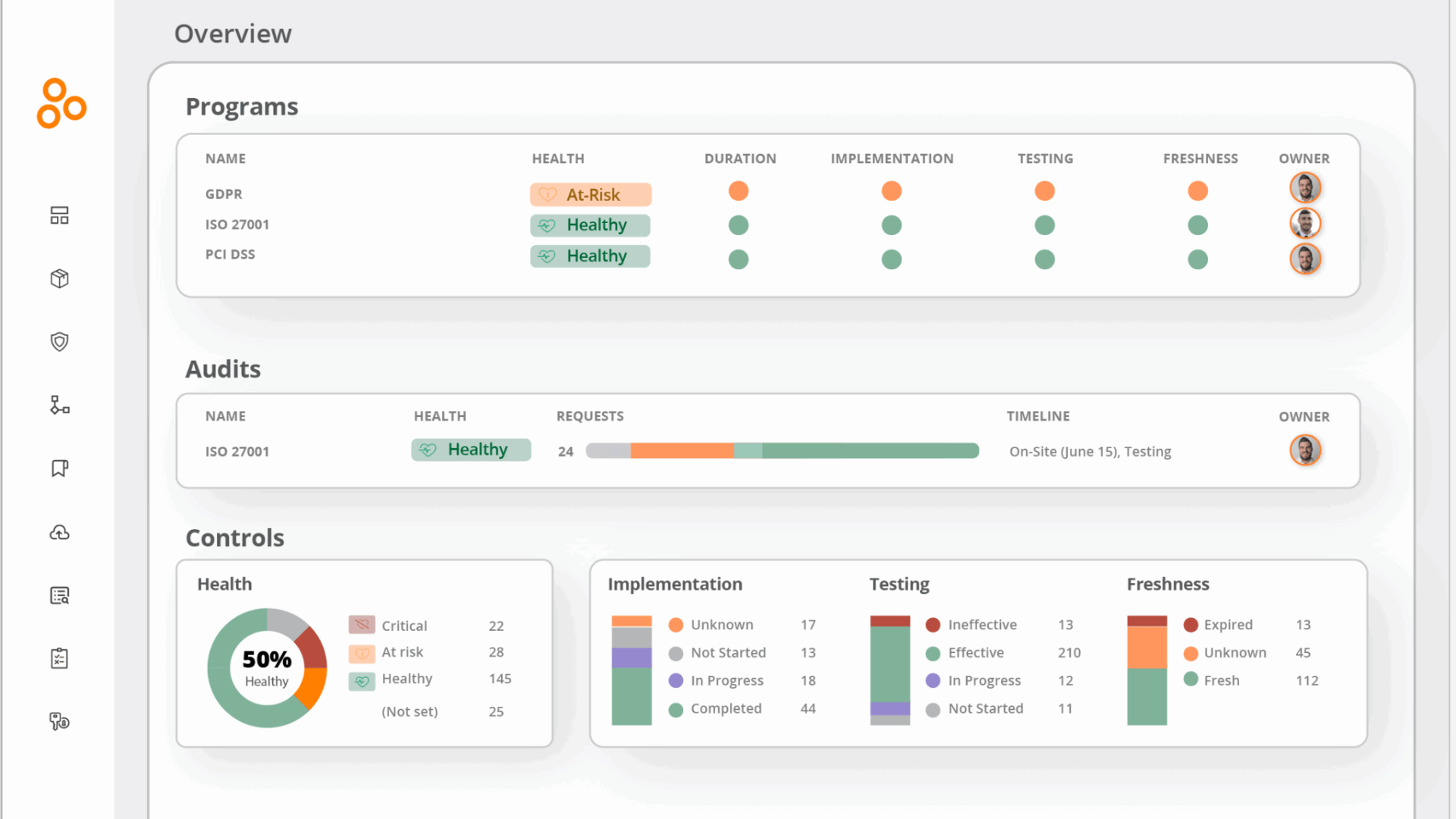
Tool #9. AuditOne
AuditOne is an AI-based compliance and security audit platform specializing in smart contracts, AI systems, and comprehensive compliance frameworks.
Key Features:
- AI Systems Audit with STARED Framework: AuditOne’s proprietary STARED methodology (Security, Technical Assessment, Regulatory Compliance, Ethics, Data Governance) offers a holistic evaluation of AI-driven systems. This ensures ethical design, legal alignment, and reliable performance across the system lifecycle.
- EU AI Compliance Checker: For organizations seeking rapid evaluation, AuditOne provides a free self-assessment tool. The EU AI Compliance Checker gauges your system’s alignment with the EU AI Act, delivering a compliance score and tailored improvement recommendations.
- Crowdsourced Audit Services: Leveraging its network of vetted auditors, AuditOne coordinates audits spanning smart contracts, penetration testing, phishing simulations, and more. The platform emphasizes efficiency - grouping multiple experts for fast, cost-effective deliverables.
Example of AuditOne in Action:
Scenario: A tech startup developing an AI-driven platform wants to ensure ethical alignment, avoid regulatory pitfalls, and bolster stakeholder trust:
- Initial Assessment: Use the EU AI Compliance Checker for a quick evaluation, uncovering areas misaligned with EU regulations.
- Deep Dive Audit: Deploy the AI Systems Audit (STARED) to evaluate security, data governance, transparency, and ethics.
- Expert Oversight: Engage AuditOne’s team of auditors for comprehensive testing - covering smart contract integrity, threat simulations, and compliance documentation.
- Actionable Insights: Receive a structured, expert-backed audit report with prioritized recommendations to secure, refine, and align the AI system effectively.
Tool #10. FairNow
FairNow is a purpose-built AI governance platform specifically designed to elevate AI compliance software to the next level. It guides organizations in managing and mitigating risks associated with both internal and third-party AI systems - through automated, framework-aligned workflows.
Key Features:
- AI Inventory & Automated Risk Tracking: FairNow maintains a centralized inventory of all AI systems and continually flags risks as they emerge.
- Automated Compliance with Global Standards: Streamline AI-based compliance with built-in alignment to key frameworks and laws like ISO 42001, NIST AI RMF, the EU AI Act, NYC LL 144, Colorado SB 205, and more.
- Governance Workflows & Evidence Automation: FairNow automates compliance tasks - such as documentation, bias audits, transparency reporting - and ensures everything is audit-ready with complete traceability.
- Single AI Governance Command Center: Organizations get a one-stop platform to manage AI governance, risk, and compliance - complete with roles, approvals, alerting, and workflow oversight.
Example of FairNow in Action:
Scenario: A large enterprise deploying multiple AI systems across HR, finance, and operations needed to comply with the EU AI Act and ISO standards while ensuring transparency and fairness.
- Inventory & Risk Detection: Automatically cataloged all AI systems, flagging those in the “high-risk” category based on EU AI Act criteria.
- Framework Mapping: Matched each AI application to required obligations under NIST, ISO 42001, and NYC LL 144.
- Automated Evidence & Bias Testing: Generated documentation, ran bias assessments, and logged approvals - streamlining audits and reducing manual work.
- Governance Oversight: Defined roles, triggered alerts for non-compliance, and centralized oversight with dashboards for leadership visibility.

Conclusion
There are many AI based compliance tools available, but which one to choose depends solely on your specific needs. Therefore, define your goals clearly. Begin by assessing your organization's unique compliance requirements, considering factors such as industry regulations, scalability, flexibility, user-friendliness, and integration capabilities.
It's also crucial to evaluate the vendor's reputation and the quality of their support services. Remember, the most suitable compliance management software is one that aligns seamlessly with your objectives and enhances your compliance processes effectively.
To sum up, AI tools for compliance are completely changing the way organizations manage regulatory requirements, offering enhanced efficiency and accuracy. As adoption rates climb, it is crucial to address the associated challenges thoughtfully, ensuring that AI integration aligns with ethical standards and regulatory obligations. By doing so, organizations can harness the full potential of AI while maintaining trust and compliance in an increasingly complex regulatory environment.
FAQ
How do I choose the right AI compliance solution for my business?
When selecting an AI compliance solution, consider:
- Your industry-specific regulations and reporting needs.
- The tool’s integration capabilities with your existing systems.
- Scalability for future compliance requirements.
- Availability of analytics and automation features.
- Vendor reputation, customer support, and data security measures.
What are the key features to look for in AI-powered compliance tools?
Look for real-time regulatory monitoring, automated reporting, risk assessment analytics, horizon scanning, seamless integration with existing systems (QMS, DMS, GRC), and scalability to adapt to future requirements.
How quickly can AI compliance tools be implemented?
Implementation timelines vary depending on system complexity and integration needs. IONI, for example, is designed for rapid deployment, enabling organizations to start monitoring compliance within days rather than months. Its intuitive interface and flexible integration options make it easier to connect with existing systems and workflows, minimizing setup time.
Can AI-powered compliance tools adapt to constantly changing regulations?
Yes. One of the biggest advantages of AI compliance tools is their ability to track regulatory updates in real time. Platforms can automatically scan global and local regulatory databases, flagging new requirements and adjusting workflows to keep your organization compliant without manual monitoring.
Are AI compliance solutions suitable for small and mid-sized businesses?
Absolutely. Many AI compliance solutions now offer scalable, cost-effective plans designed specifically for small and medium-sized businesses (SMBs). These tools allow smaller organizations to benefit from automation and real-time monitoring without investing in expensive enterprise-level infrastructure.


